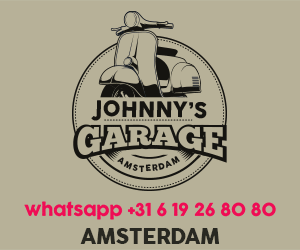
Never heard the term Kamakia? Try to Google it and you will you learn that KAMAKI is a river in Kamtsatka (Russia), a Python API for managing clouds, an app for the iPhone, a Hip-Hop band in Oregon, a Club in Goa and a production company in Amsterdam! But it is certainly much more.
My personal experience
My first direct contact with Kamakia was when I was 17. It was during a warm summer night in a disco on a Greek island. An impressive group of good looking, modern, casual and well-dressed local men, some of them armed with knives, were stressing me and my female company. It took me days of asking around, trying to empathize with them, to understand. The two girls I was with, had visited the place before and some local Kamakia had already claimed them. No fun for us, we had to leave the place asap. After the incident I was intrigued by the phenomenon. The shiny image built by media in Athens about the legendary Greek lovers started fainting. I found out that several of these men were making their living relating to foreign tourist women not only by accepting presents. A lot of the local businesses were started by receiving (never paid back) “loans” from foreign women!
I spent tenths of years been critical and vertically rejective towards this male Greek macho subculture: Kamakia, de harpoons, the tourist attraction of Greek lovers during the 70’s and the 80’s. Men, young and old, full time busy with picking on tourists during the summer, enjoying many girlfriends per season, sometimes several per day.
History of a social phenomenon
The Kamakia subculture began by the fall of the 60s. During this time Greece was living under a dictatorship. Pop culture and the sexual revolution were kept out of the border. The Rolling Stones were not allowed to give concerts and Pink Floyd were stopped at the border. Local Rock en Roll artists were publicly intimidated in markets on a middle age like manner. Still, bits of the freedom revolution going on in the West came in the country via the tourists. The first Kamakia were mirroring this influence, wore tight bell bottomed pants and heeled shoes, had afro hair and were great dancers.
After the end of the dictatorship in 1978, the golden age of the Kamakia started. The border was open, the country was experiencing the 60’s and 70’s on a fast forward manner, along with the accompanying ethical and cultural shaking. The explosion of tourism gave grounds to massive partying. The first big clubs started to appear around the country especially in tourist centers. It looked like all Greek men that had any chance to meet tourist girls would at least be a part time Kamaki. From this period there are even Kamakia associations reported, establishing ethical rules of engagement, like, no stealing, no violence etc. Films, songs and many stories established a main stream social image of Kamakia. All these multicultural relationships resulted in many marriages, family immigration and multilingual children.
After 1988 the curtain began to fall for Kamakia. The Cold War psychology, the 80s nuclear paranoia’s, the no future cult, they were all killers of the spontaneous and naïf 60’s and 70’s approach to sexuality. The final hit was given by the spread of Aids. Little by little the hobbyists and proffessional Kamakia became less and less active. Nowadays there are only a few locations were one could see them on the job. The term is not popular and no one feels part of a subculture when dating during the summer. The links of Kamakia to the, nowadays illegal, sex tourism reach the surface.
The other side of the story
Many years after my own personal Kamakia confrontation, I discovered the other side in Holland. I came across this friendly group of Dutch females in Rotterdam, all in their late 40’s, introduced to me as Greece fans. They have been visiting Greece annually during the summer for 12 years. In the Netherlands most of them lived a solitary life, had children to care for and mostly no boyfriends. Flattered I asked them what did they like in Greece. “The sex”, they told me. A bit disillusioned (no culture, history, music etc. involved) I kept asking, only to find out that Greece was to them a destination of guaranteed sexual pleasure, as such advertised in Dutch travel offices! Suddenly all these young Greek Kamakia men looked less macho to me. Horrified I heard the friendly women explaining that since a couple of years they had a new summer destination. Greece was not any more guarantying satisfaction and most important was becoming expensive. Their new destination was Thailand, where they could get a young man for just 2.50 guilders per day. One of them even shared with me that during their vacation in Thailand her husband’s present for her birthday was a young boy!!! The associations were made in my mind: no macho image for Kamakia, merely gigolo’s to hire by lonely European ladies. Victims of early sex tourism rather than supreme male Zeus-like figures.
P.S.
Two spicy facts were mentioned to me by several friends on Crete and Greek bloggers: a pro-Kamaki manifestation of tourist women is supposed to have taken place on Crete in 1987. Related to this manifestation, a discussion is supposed to have been held in the European parliament, on an appeal of a parliament member of the Green party. Although Greek blogs are full of references, it was impossible for me to double check this information by any official sources.
You can also look into the Colossi of Love documentary about the Greek Kamakia era in Rhodos Greece.
Alexandros Kyrkos is living in the Netherlands since 1987. He is an active musician, performing in the whole country and the neighboring ones: traditional Greek and Balkan, Greek pop and recently medieval songs. He is a multimedia expert, has been a media streaming guru and a Second Life entrepreneur. He is a Dutch media correspondent with people-tracking, editorial and translating tasks.



